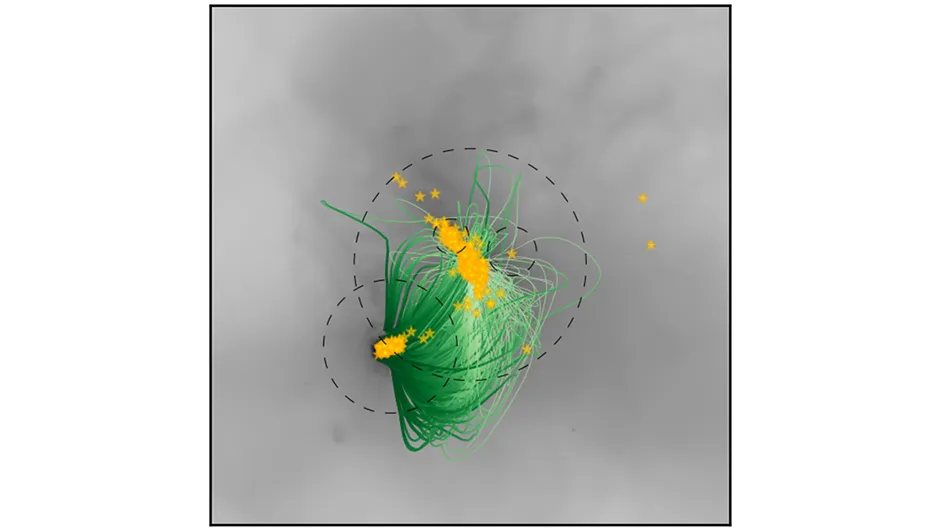Astrophysicists have discovered that up to half of the matter in our galaxy may have travelled across intergalactic space from distant galaxies. The team from Northwestern University used supercomputer simulations to model the formation of galaxies and flow of matter.
These showed that supernova explosions ejected large amounts of gas into space, resulting in atoms being transported from one galaxy to another.
After the Big Bang, 14 billion years ago, there were no stars or galaxies and the universe was filled with a uniform gas.
However, tiny perturbations in the mass distribution eventually started to grow under the force of gravity, forming stars and finally separate galaxies.
This new phenomenon of intergalactic transfer, seems to be critical for the evolution of galaxies from the Big Bang in the simulations, revealing that galaxies are far less independent than previously thought.
“Given how much of the matter out of which we formed may have come from other galaxies, we could consider ourselves space travellers or extragalactic immigrants,” says Daniel Anglés-Alcázar, a postdoctoral fellow in CIERA (Centre for Interdisciplinary Exploration and Research in Astrophysics), who led the study.
“It is likely that much of the Milky Way’s matter was in other galaxies before it was kicked out by a powerful wind, travelled across intergalactic space and eventually found its new home in the Milky Way.”

The vast distance between galaxies means that, even with galactic winds travelling at hundreds of kilometres per second, this process must have occurred over several billions of years.
The research team found that gas flowed from smaller galaxies to larger ones where it then formed new stars.
Further, the simulations showed that intergalactic transfer of mass could even account for up to 50 per cent of matter in the larger galaxies.
“This study transforms our understanding of how galaxies formed from the Big Bang,” says Claude-André Faucher-Giguère, a co-author of the study and assistant professor of physics and astronomy in the Weinberg College of Arts and Sciences.
“What this new model implies is that up to one-half of the atoms around us - including in the solar system, on Earth and in each one of us - comes not from our own galaxy but from other galaxies, up to one million lightyears away.”
More research in the future will focus on these new ideas of galaxy formation, and observational evidence will be used to verify the predictions of intergalactic mass transfer.
But the findings could be more fundamental to how we view ourselves.
If they are true, every one of us consists of particles that have travelled billions of lightyears to be where they are today.

